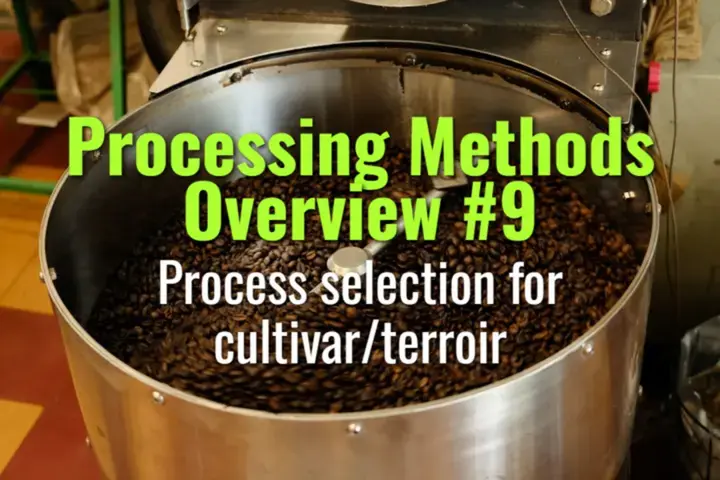Process selection for cultivar/terroir
This topic explains how the choice of processing method interacts with coffee cultivar and terroir, shaping sensory outcomes and helping producers maximize both quality and market potential.
- Coffee Basics Nerds
- 2 min read
Article 9 of 12 in Processing Methods Overview/

Why Process Selection Matters
- Processing is the final expression of terroir and genetics before roasting.
- The same cultivar tastes very different under washed, natural, or honey processes.
- Aligning process with cultivar and terroir enhances cup value and reputation.
Cultivar Considerations
- Gesha/Geisha: Naturally floral and aromatic; washed process highlights clarity, while naturals intensify fruitiness but risk overshadowing delicate notes.
- SL28/SL34 (Kenya): Known for acidity and blackcurrant notes; washed process preserves brightness and terroir transparency.
- Bourbon & Typica: Balanced sweetness; honey or pulped natural can add body and fruitiness.
- Pacamara: Big bean, bold flavors; naturals and experimental fermentations enhance tropical/winey profiles.
- Robusta: Often processed natural or wet-hulled; new honey/fermentation methods explored to improve cup perception.
Terroir Considerations
- High-altitude, cool climates: Washed processing emphasizes acidity and floral notes already enhanced by terroir.
- Low-altitude, hot/dry regions: Natural and honey processes preserve sweetness and body, while reducing water needs.
- Humid/rainy climates (Indonesia): Wet-hulling or mechanical drying adapted for faster processing.
- Volcanic soils with complex terroir (Ethiopia, Guatemala): Washed processes best showcase terroir clarity.
Matching Process to Market Goals
- Specialty market: Prefers washed for clarity, naturals/honey for experimental and fruit-forward lots.
- Commodity market: Favors processes that maximize efficiency and yield (strip-harvested naturals, mechanical drying).
- Direct trade/micro-lots: Tailored processes for specific buyers (e.g., anaerobic fermentation for competitions).
Challenges of Process Selection
- Risk of mismatch: delicate cultivars overwhelmed by heavy fermentation.
- Infrastructure limits: smallholders may not afford multiple processing methods.
- Climate unpredictability: weather can force last-minute changes (e.g., switching to naturals in drought years).
Best Practices
- Conduct side-by-side trials with the same cultivar under different processes.
- Cup results with buyers to determine preferred profiles.
- Adjust processing annually based on climate conditions.
Lasting Importance
Process selection is a strategic tool for farmers to align genetics, environment, and market demand. By choosing the right method for each cultivar and terroir, producers can unlock distinctive flavors, command premiums, and strengthen their place in the specialty coffee world.
You might also like:
- Tags:
- Lasting Importance
- Best Practices
- Specialty Coffee
- Direct Trade
- Sweetness Body
- High Altitude
- Fruit Forward
- Micro Lots
- Washed Processing
- Pulped Natural
- Processing Methods
- Natural Honey
- Honey Processes
- Humid Rainy
- Choosing Right
- Washed Natural
- Balanced Sweetness
- Honey Pulped
- Specialty Market
- Floral Notes
- Volcanic Soils
- Acidity Floral
- Low Altitude
- Rainy Climates
- Delicate Notes